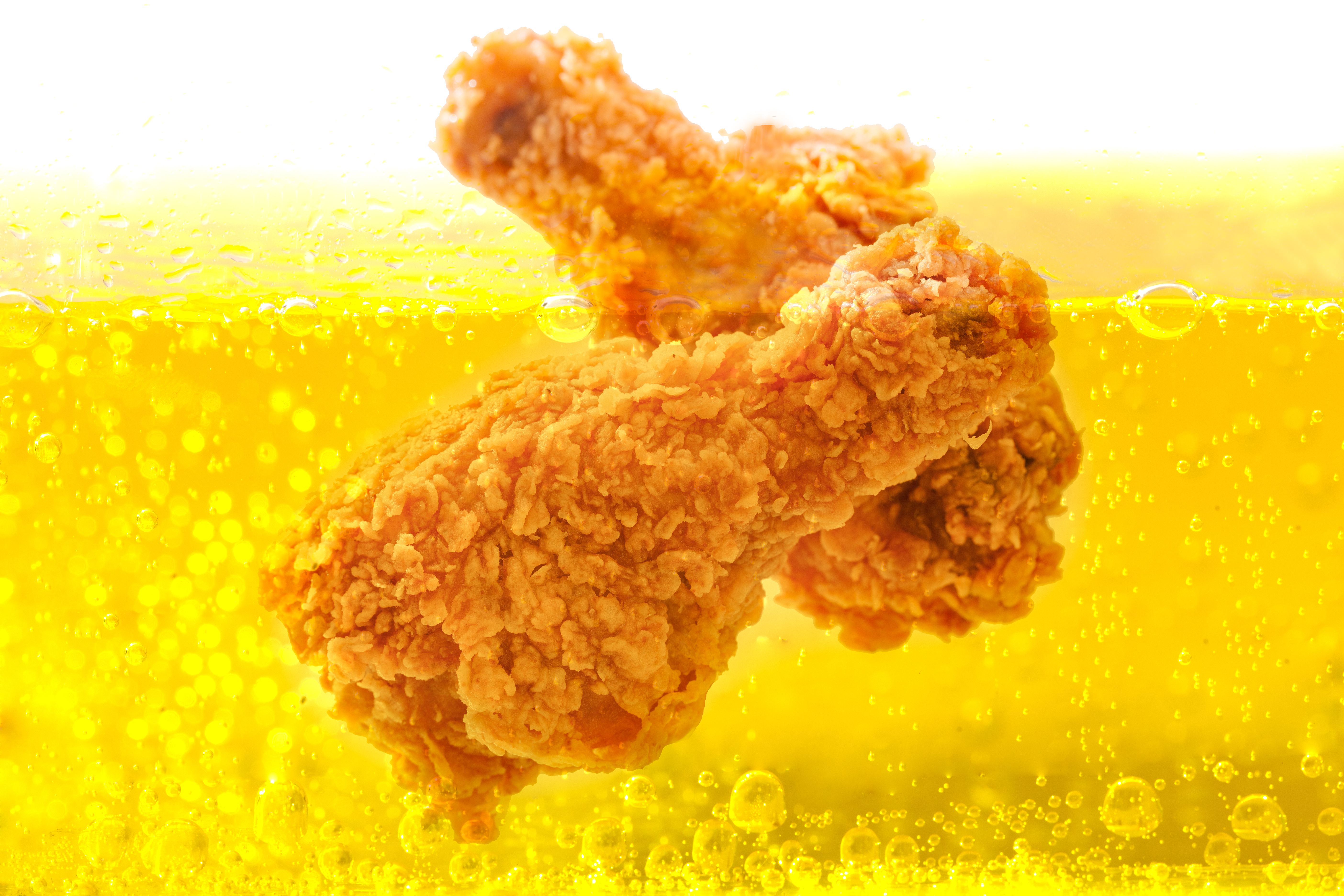
Cooking with olive oil, even under high heat, does not create trans fats. In fact, olive oil is the most stable liquid cooking fat and naturally has a high resistance to breaking down under heat.
Consumers are wise to want to avoid trans fats in their diets. According to Harvard Medical School, trans fats are "the worst type of dietary fat". Trans fats are not regarded as safe by the Food and Drug Administration, and in 2015, the FDA banned artificial trans fats from foods in the USA (though you may still find them in the food supply).
Artificial trans fats are formed during partial hydrogenation, a process that converts unsaturated fats into saturated fats with an extended shelf life. Hydrogenation, complete or partial, is a chemical process in which hydrogen is pumped into liquid oils to turn them into a solid or semi-solid form. The process is preformed in a pressurized chamber and requires a catalyst such as nickel. Trans fats are a byproduct of partial hydrogenation.
Does frying with olive oil create trans fats?
Cooking oils do not hydrogenate or create trans fats during home cooking, even beyond the smoke point.
- A 1999 study published in the International Journal of Fats and Oils fried potatoes in olive oil at 356°F for 15 minutes. The oil was reused 8 times and sampled after each use. Even after being used 8 times, less than 0.002% trans fatty acids were formed.
- A study, published in 2012 in the Canadian Journal of Dietetic Practice, heated canola oil, a relatively unstable polyunsaturated fat, to 527°F (significantly past its smoke point of 400°F) and found that cooking, even at extreme temperatures, did not create trans fats.
- A 2015 study conducted in South Korea, published in Toxicol Res, analyzed the effects of baking, stir-frying, pan-frying and deep frying on corn oil which contained a trace amount of natural trans fats. The study found that after cooking with corn oil, the increase in trans fats was so low that the foods could legally be listed as free of trans fats.
Olive oil does not contain any trans fats to begin with and since the fat in olive oil is primarily monounsaturated, it is less likely to oxidize when heated. Oxidation creates the unstable conditions where oil starts to break down chemically. Monounsaturated fats and saturated fats are naturally resistant to oxidation. Extra virgin olive oil is the most stable liquid cooking fat because of the high percentage of monounsaturated fat and the antioxidants that protect the oil from breakdown.
Furthermore, it is not likely that you will reach the smoke point of olive oil when cooking or frying. Watch the video below for a demonstration.
Does cooking with olive oil make the fat in the oil turn into saturated fat?
No. The word “saturated” describes the chemical structure of the fat molecules, which doesn’t change after being heated - even past the smoke point or to a very high temperature. Olive oil is typically composed of 75% monounsaturated fat, 13% saturated fat, and 12% polyunsaturated fat. The composition of the oil stays the same.
The process of hydrogenation is the only way to turn olive oil's unsaturated fat into saturated fat. The following video shows a scientific experiment where olive oil is hydrogenated.
Further reading
Learn more about the stability of extra virgin olive oil under heat:
Smoke Point Not a Reliable Indicator of Cooking Oil Stability
Cooking Oil and Oxidative Stability
US News reports on olive oil smoke points
It’s Safe, Healthy and Affordable to Cook with Extra Virgin Olive Oil

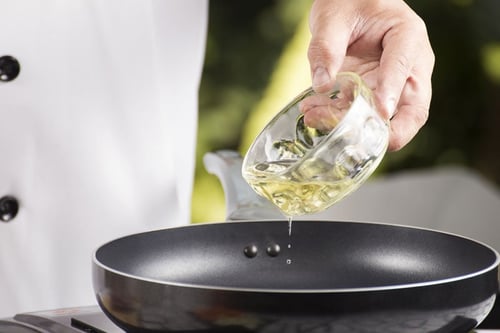
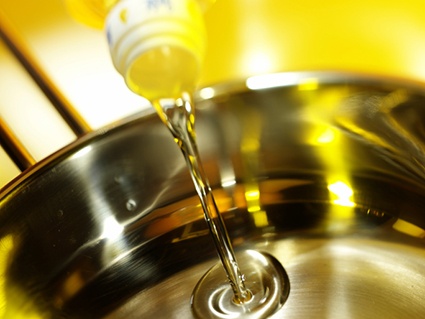
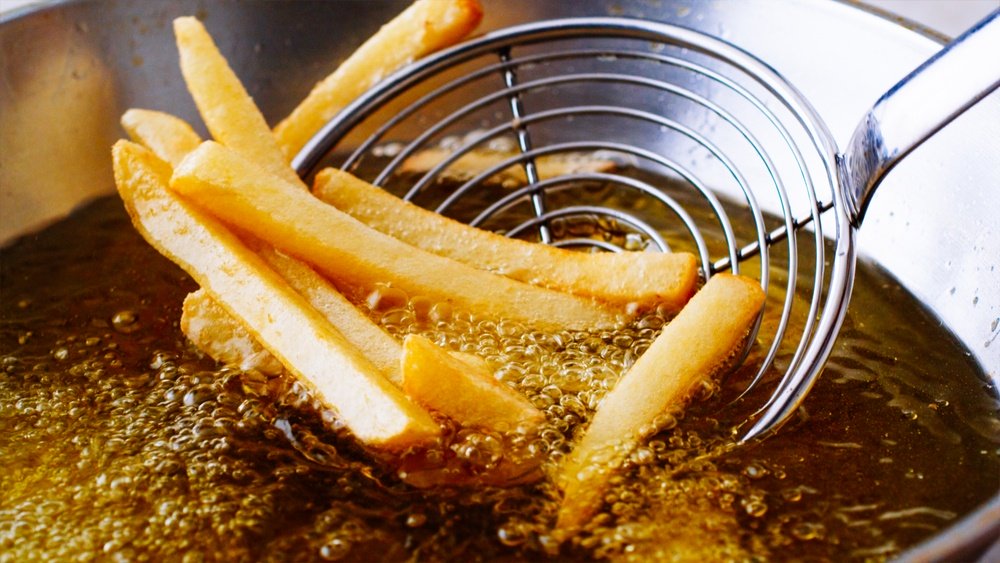
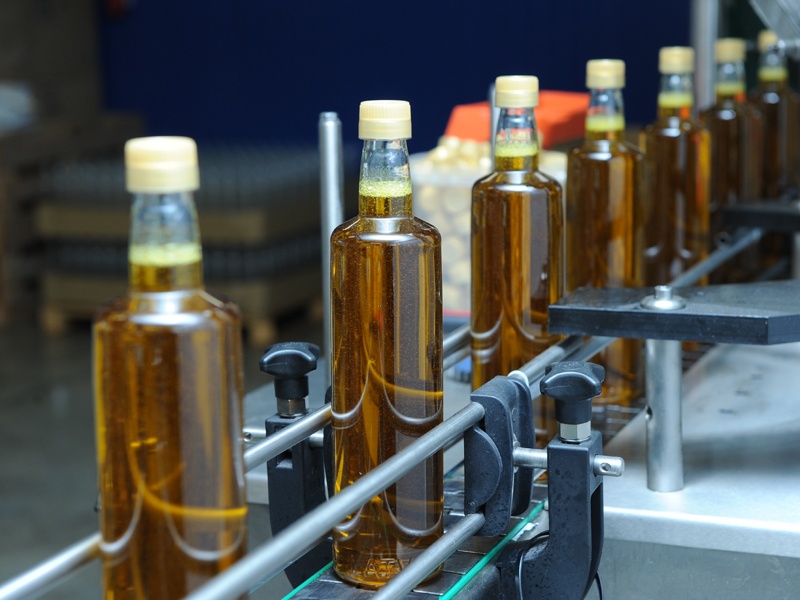
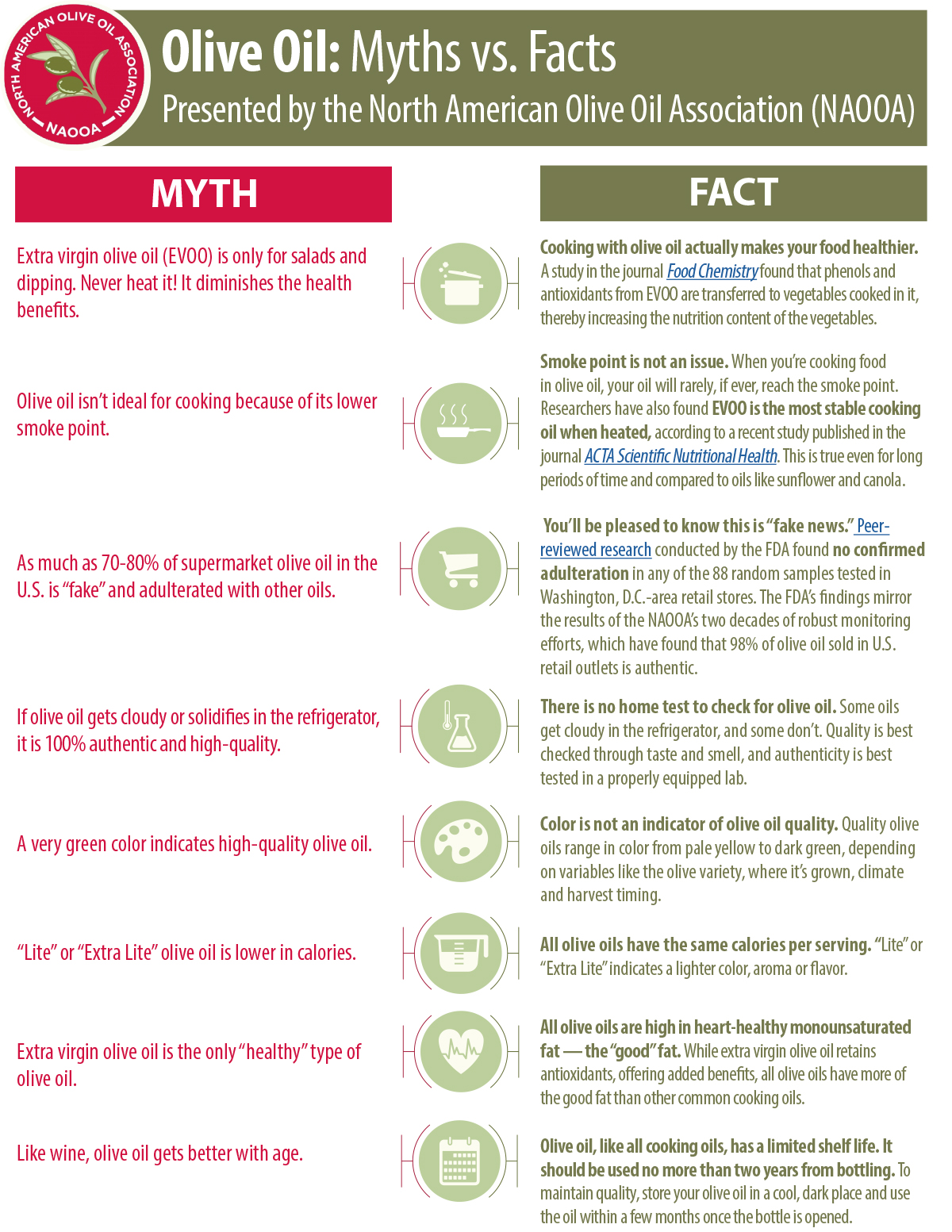
 The North American Olive Oil Association is committed to supplying North American consumers with quality products in a fair and competitive environment; to fostering a clear understanding of the different grades of olive oil; and to expounding the benefits of olive oil in nutrition, health, and the culinary arts. | © North American Olive Oil Association. All Rights Reserved.
The North American Olive Oil Association is committed to supplying North American consumers with quality products in a fair and competitive environment; to fostering a clear understanding of the different grades of olive oil; and to expounding the benefits of olive oil in nutrition, health, and the culinary arts. | © North American Olive Oil Association. All Rights Reserved.